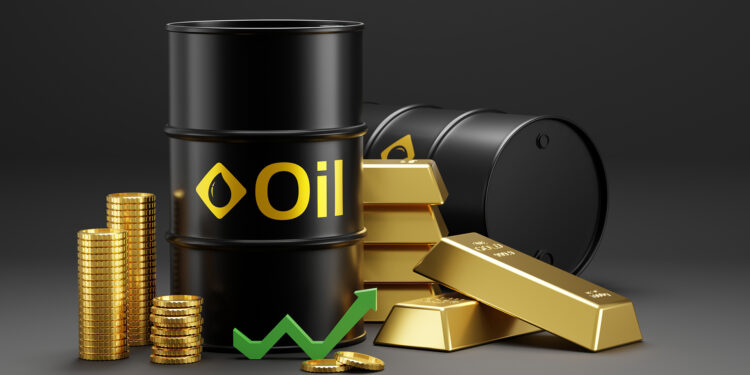Oil prices rose slightly yesterday, Friday, but are still on track to record weekly losses, as investors balanced expectations related to increased production from Libya and other countries in the OPEC Plus alliance against economic stimulus measures from China.
For its part, gold has stopped on its upward journey, but it is still on its way to achieving its best quarterly performance since the first quarter of 2016.
Brent crude futures rose by the end of Friday trading by 38 cents, or 0.53%, to reach $71.89 per barrel, while US West Texas Intermediate crude futures rose by 51 cents, or 0.75%, to reach $68.18 per barrel.
Despite the rise in prices on Friday, Brent crude is still down by about 3% for this week, while US crude is heading towards a loss of about 5%.
This slight increase comes as the Chinese central bank lowers interest rates and pumps liquidity into its banking system, with the aim of reaching the economic growth target of about 5% for this year.
Additional financial measures are expected to be announced before the holiday season begins in China on October 1.
OPEC Plus and production
The Organization of the Petroleum Exporting Countries (OPEC) and its allies, known as OPEC Plus, plan to continue increasing production by 180,000 barrels per day starting next December.
This comes after a report from the Financial Times indicating that Saudi Arabia is seeking to increase production to regain its market share, abandoning the oil price target of $100 per barrel.
Saudi Arabia has repeatedly denied setting any specific target for the price of oil, and sources from OPEC Plus confirmed that the increase in production in December does not represent a fundamental change in current policy.
Libya has also been the focus of interest in oil production. Delegations from Libya’s rival legislative bodies signed an agreement on Thursday to resolve the crisis over the leadership of the country’s central bank, a dispute that has led to a sharp decline in oil exports.
Libyan oil exports fell to 400,000 barrels per day this month after exceeding one million barrels per day in the previous month, and this agreement is expected to contribute to stabilizing production.
Geopolitical tensions worry markets
Geopolitical tensions continue to weigh on oil prices, with Lebanese Prime Minister Najib Mikati condemning the Israeli attacks on the southern suburb of Beirut on Friday, noting that such actions show that Israel “does not care” about efforts to achieve a ceasefire.
These escalating tensions in the Middle East, represented by the continuation of the Israeli aggression against the Gaza Strip and Lebanon, and the possibility of expanding the crisis, increase with Israel announcing that it was able to kill the Secretary-General of the Lebanese Hezbollah, Hassan Nasrallah, which may lead to the disruption of oil supplies from an energy-rich region.
Strong gold
Meanwhile, gold’s record journey came to a halt on Friday but is still on track to achieve its best quarterly performance since the first quarter of 2016. The spot gold price fell on Friday by 0.1% to reach $2,666.50 per ounce.
It is just below the all-time high of $2,685.42 hit in the previous session. US gold futures fell by 0.2%, reaching $2,688.90 per ounce.
Gold prices have risen by 29% so far this year, and achieved successive record levels after the US Federal Reserve cut interest rates by half a percentage point, and China announced stimulus measures earlier this week.
Silver prices also rose, following the trend of gold, although analysts warned that this rise may not continue.
Silver fell on Friday by 0.1% to $31.98 per ounce, after reaching its highest level since December 2012 at $32.71 on Thursday, recording the third weekly gain in a row.
Contrasting performance to other precious metals
Among other precious metals, platinum rose by 0.5% on Friday, reaching $1,012.40, while palladium fell by 1.5%, reaching $1,031.75.
As markets continue to navigate economic stimulus measures, geopolitical tensions and changing production dynamics, investors are closely monitoring these fluctuations in both the oil and precious metals markets to monitor future trends.



